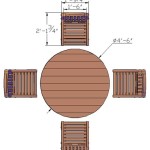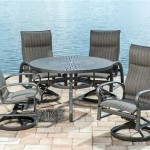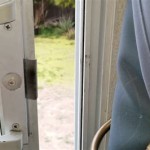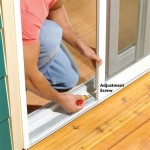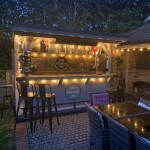Can You Put A Fire Pit On A Patio: A Comprehensive Guide
The allure of a crackling fire, the ambient warmth, and the social gathering it fosters make fire pits a desirable addition to many outdoor living spaces. Patios, often the focal point of backyard entertaining, naturally become consideration for fire pit placement. However, the question of whether a fire pit can be safely and effectively placed on a patio requires careful consideration of various factors. The primary concerns revolve around safety, patio material, building codes, and intended use. This article delves into the relevant aspects to help determine the feasibility of adding a fire pit to a patio.
Before proceeding with any installation, it is imperative to understand the potential risks associated with open flames, especially on or near combustible surfaces. Embers escaping from the fire pit can ignite nearby materials, including furniture, landscaping, or even the patio itself. The heat generated by a fire pit can also cause damage to certain patio materials, leading to costly repairs or replacements. Furthermore, improper installation or use can pose a fire hazard, endangering the safety of individuals and property.
Therefore, a thorough understanding of safety guidelines, building codes, and the properties of patio materials is crucial to making an informed decision. Failure to address these concerns can lead to hazardous situations and legal liabilities. The following sections explore these aspects in detail, providing a framework for evaluating the suitability of placing a fire pit on a patio.
Identifying and Assessing Patio Materials
The material composition of the patio plays a decisive role in determining whether it can safely accommodate a fire pit. Different materials exhibit varying degrees of heat resistance and flammability, impacting the overall safety of the installation. Concrete, brick, stone, and composite materials are the most common choices for patio construction, each with its advantages and limitations.
Concrete, a widely used material, is generally considered fire-resistant. However, prolonged exposure to intense heat can cause cracking and spalling, especially if the concrete is not properly cured or contains internal moisture. The thermal expansion and contraction induced by repeated heating and cooling cycles can weaken the structure over time. Therefore, a protective barrier between the fire pit and the concrete surface is highly recommended.
Brick and stone patios offer superior heat resistance compared to concrete. These materials are inherently non-combustible and can withstand higher temperatures without significant damage. However, the mortar joints between the bricks or stones are more susceptible to heat degradation. Over time, the mortar can crumble and loosen, compromising the structural integrity of the patio. Proper maintenance and periodic repointing of the mortar joints are essential to prevent these issues.
Composite decking materials, often made from a blend of wood fibers and plastic, are becoming increasingly popular for patio construction. While offering aesthetic appeal and low maintenance, composite materials are generally less heat-resistant than concrete, brick, or stone. Direct contact with flames or intense heat can cause melting, warping, or even ignition. Placing a fire pit directly on a composite deck is generally not recommended unless specific precautions are taken, such as using a fire-resistant mat or a raised platform.
The selection of a fire pit type should also consider the patio material. For instance, a wood-burning fire pit generates more heat and embers than a propane or natural gas fire pit. Consequently, a patio made of less heat-resistant materials, such as composite decking, may be more suitable for a gas-fueled fire pit.
Evaluating Fire Pit Types and Safety Considerations
Fire pits are available in a variety of types, each with its own set of characteristics and safety considerations. The choice of fire pit should be guided by the patio material, intended use, and local regulations. The primary types of fire pits include wood-burning, propane, natural gas, and gel fuel.
Wood-burning fire pits offer the classic appeal of a natural fire, but they also pose the highest risk of ember escape and smoke production. These fire pits require a clear area around them, free of combustible materials, and should be used with a spark screen to contain flying embers. Regular cleaning and ash removal are essential to prevent the buildup of flammable debris. Furthermore, wood-burning fire pits are subject to local regulations regarding open burning, which may restrict their use during certain times of the year or under specific weather conditions.
Propane fire pits offer a convenient and cleaner alternative to wood-burning fire pits. They produce less smoke and embers, making them a more suitable option for patios located near homes or other structures. Propane fire pits typically use a standard propane tank, which must be stored safely away from the fire pit and in a well-ventilated area. Regular inspection of the propane tank and gas lines is necessary to prevent leaks and ensure safe operation. It is crucial to follow the manufacturer's instructions for proper installation and use.
Natural gas fire pits provide a continuous fuel supply, eliminating the need for propane tank refills. These fire pits require a permanent gas line connection, which must be installed by a qualified professional. Natural gas fire pits offer similar advantages to propane fire pits in terms of reduced smoke and ember production. However, the installation process is more complex and may require permits from local authorities. Regular inspections of the gas line and connections are critical to prevent leaks and ensure safe operation.
Gel fuel fire pits are a relatively new option that uses small cans of gel fuel to produce a flame. These fire pits are typically smaller and more portable than wood-burning or gas fire pits. Gel fuel fire pits produce minimal smoke and embers, making them a suitable option for patios with limited space or where open burning is restricted. However, gel fuel can be expensive, and the flames are often less intense than those produced by other types of fire pits. It is important to use only approved gel fuel cans and to follow the manufacturer's instructions for safe use.
Regardless of the type of fire pit chosen, it is essential to take appropriate safety precautions. This includes maintaining a safe distance between the fire pit and combustible materials, using a fire extinguisher or water source nearby, and never leaving the fire unattended. Children and pets should be supervised at all times when the fire pit is in use.
Understanding Building Codes and Local Regulations
Before installing a fire pit on a patio, it is crucial to understand the applicable building codes and local regulations. These regulations are designed to ensure public safety and to prevent fire hazards. Failure to comply with these regulations can result in fines, legal liabilities, or the forced removal of the fire pit.
Building codes typically address issues such as setbacks from property lines, clearances from structures, and requirements for fire suppression equipment. Some jurisdictions may require permits for the installation of fire pits, especially those that use natural gas lines. The permitting process may involve inspections to ensure compliance with safety standards.
Local regulations may also restrict the types of fire pits that are allowed, the times of day when they can be used, or the types of fuel that can be burned. For example, some areas may prohibit wood-burning fire pits during periods of high fire risk or air pollution. It is important to check with the local fire department or building department to determine the specific regulations that apply to the location.
Homeowners' associations (HOAs) may also have their own rules and regulations regarding fire pits on patios. These regulations may restrict the size, type, or location of fire pits, or may require approval from the HOA board before installation. It is essential to review the HOA guidelines before proceeding with any installation.
Compliance with building codes and local regulations is not only a legal requirement but also a responsible way to ensure the safety of individuals and property. By taking the time to understand and follow these regulations, homeowners can enjoy the benefits of a fire pit without compromising safety or creating a nuisance for their neighbors.
In summary, placing a fire pit on a patio requires careful consideration of various factors, including the patio material, the type of fire pit, and local regulations. By understanding these factors and taking appropriate precautions, homeowners can safely and effectively add a fire pit to their outdoor living space. A heat-resistant barrier between the fire pit and the patio surface is always recommended. Careful consideration should also be given to the placement of furniture and other combustible materials in relation to the fire pit. This is crucial for preventing accidental fires and ensuring the safety of all users. Always consult with local authorities and relevant professionals to ensure compliance with all applicable regulations and guidelines.

Where To Build A Fire Pit On The Patio Or Separate Area Of Our Landscape Design

How To Build A Diy Paver Patio With Firepit

Can You Build A Fire Pit On Top Of Pavers Sequoia Stonescapes

5 Tips For Designing A Patio Around Fire Pit Belgard

Can You Put A Fire Pit On Deck Here S What Should Consider Custom Creations

Where To Build A Fire Pit On The Patio Or Separate Area Of Our Landscape Design

How To Safely Eoy Your Outdoor Fire Pit Regan Zambri Long Personal Iury Lawyers Pllc

Can You Put A Fire Pit On Paver Patio Simple Guide Js Brick Pavers

Is It Safe To Use A Fire Pit Under Covered Patio Woodlanddirect Com

Which Fire Pit Is Right For Your Patio Paver House Blog

